I started working on Sailor Twain in my mid-thirties. This is a peculiar time in a man’s years, the summer of life. By then some inhibitions have dropped off, the anxieties and contradictions of the spring-chicken-days have quieted, and a man’s sense of himself and his power changes. A strident but dispersed potency gives way to a more focused, laser-like intention, sometimes. It’s also a time when mermaids sing.
“The mid-life crisis,” or however we label it, is no less baffling for being so widespread. The mermaid song varies from person to person. A successful businessman drops everything, buys a Harley Davidson and disappears on Highway 66. A famous politician dashes a marriage and a rising career for a fling. Some of these mid-life meltdowns are innocent, some catastrophic.
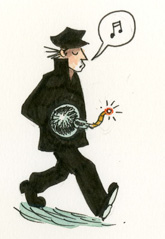
The mermaid’s song seems utterly irresistible, overwhelming reason and common sense at every turn. Makes you wonder what strange, unfulfilled dream is about to explode out of those we know. Or out of ourselves.
Some projects are born of ambition, some are done for fun. Sailor Twain began from a personal need to handle some of these inner conflagrations; either harness them into a story or have them wreck my life. So this captain turned up in my sketch journals. Captain Twain, with a name like that Clemens fellow, only this was his real name, and a hint of his fate. 19th century New York, on a steamboat was the setting. At first all is going swimmingly for him—or so it seems: he has a sterling reputation, a sharp uniform
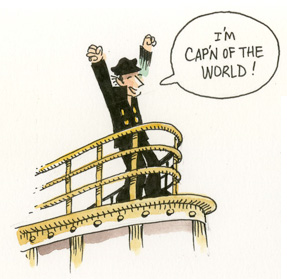
a loving marriage

and a fine ship under his command
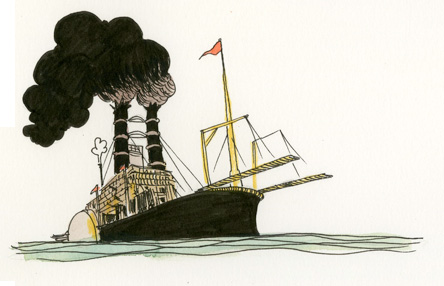
Then it all blows up in his face.

Before that of course there’s a mermaid, whom Twain is drawn to.
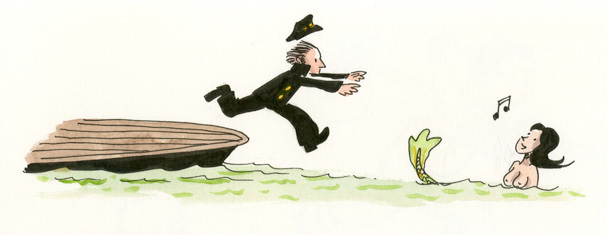
Once I put characters down on paper, they couldn’t just be voices from my head. They became characters of their own. What’s the story from the mermaid’s standpoint? What effect does she have on Twain? Who else has had an encounter with her—has anyone heard her sing? And so on. A couple years on, it turned into a story with a gallery of characters that includes a fish-gal.

There are great explorations of this mid-life storm in books and movies. Kevin Spacey gives it an immortal portrayal in American Beauty. In his case though, the mid-life is also the end-of-life.
The meaning of mermaids has grown for me in all kinds of ways, and obsession was only one of the threads running through the tale. A siren song can take so many forms, from addiction to workaholism, Ahab’s whale or Don Draper’s downfall.
You know how you buy a car and suddenly notice that same model everywhere you go? As I was researching my project Sailor Twain, or the Mermaid in the Hudson I started seeing mermaids everywhere. At the time train stations were plastered with the Disney Musical one—couldn’t resist the snapshot.
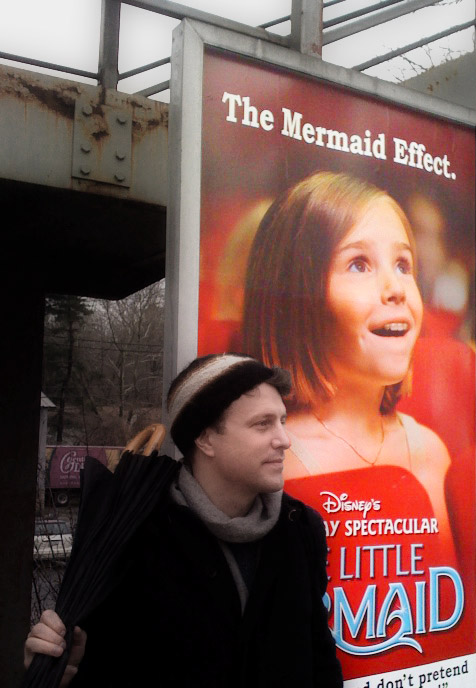
“The Mermaid Effect”! Isn’t that what advertisers are after? Alongside my book, I collected mermaids in art and advertising. Here are a few fun items
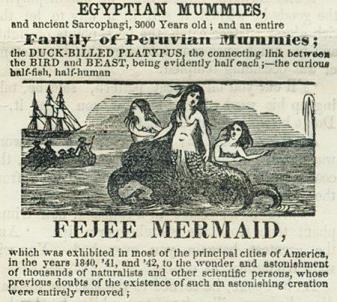
P.T. Barnum: The old scoundrel had a creature in his famous show—in the end, a slightly disgusting amalgam of dead creatures, but in the 1880s it was still a huge draw to his New York museum.
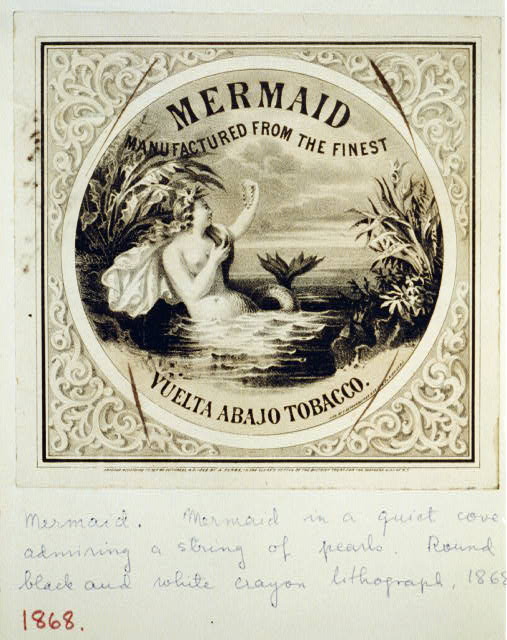
All addictive susbtances naturally lend themselves to the mermaid theme Here’s another, more recent one (designed by Tommy Kane):
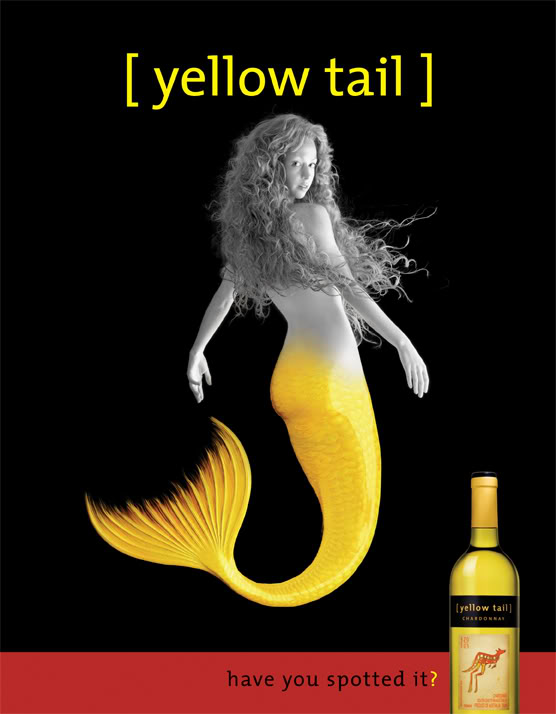
This other ubiquitous addiction uses the half-fish creature as its emblem too:

Alcohol, tobacco, absinthe, coffee—why not water? I like this clever concept, which was everywhere in the city a few years ago
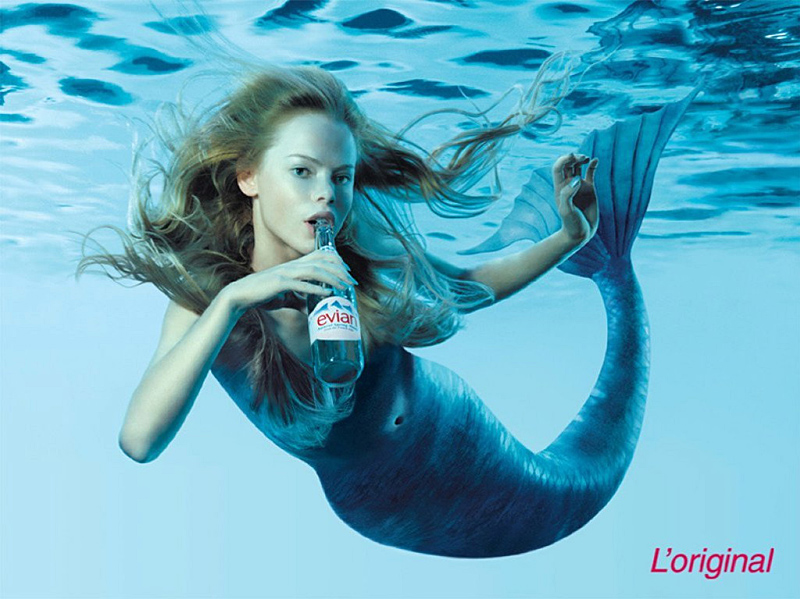
And one more for today, a lovely ad for Levi jeans by the talented Michel Gondry:
Pub Levis : Les Sirènes (1997) by tartenpion333
Mark Siegel is an author and illustrator. His other works include Seadogs, Long Night Moon and others. He is the editorial director of First Second Books. Check out his website here.
Disclaimer: Mark Siegel is a Macmillan employee.










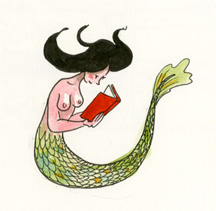
There’s a classic comedy, Mr. Peabody and the Mermaid – William Powell is a meek middle-aged man whose wife ignores him. On holiday at the beach he catches a mermaid, Ann Blythe.
She is nude, mute and passionate – a heady combination for a guy with a mid-life crisis. It’s a funny film, but really makes me wonder: Why mermaids? Shouldn’t they be cold fishes, not hot blooded lovers? They are powerful symbols of love without social limits, but why?
See also, The Incredible Mr. Limpet (not technically mermaids, but).
There is a song the Canadian group Great Big Sea sings about a mermaid, and at the end, after realizing that the mermaid being a fish from the waist down somewhat limits romantic possibilities, the protagonist speculates that a mermaid who is a fish from the waist up might be preferrable.
I never thought about the mermaid or siren being a metaphor for a midlife crisis, but the theory makes a lot of sense. Archetypes are usually archetypes because they resonate so strongly with an aspect of the human condition.
A lovely piece, Mark!
At the Met, there’s a wonderful statue I’ve seen, near where the Medieval gallery fades into the American Wing, that looks like the inspiration for the Starbucks logo…
:) I’ve never seen the Starbucks logo as a mermaid; it’s always looked more like a sheela-na-gig to me.